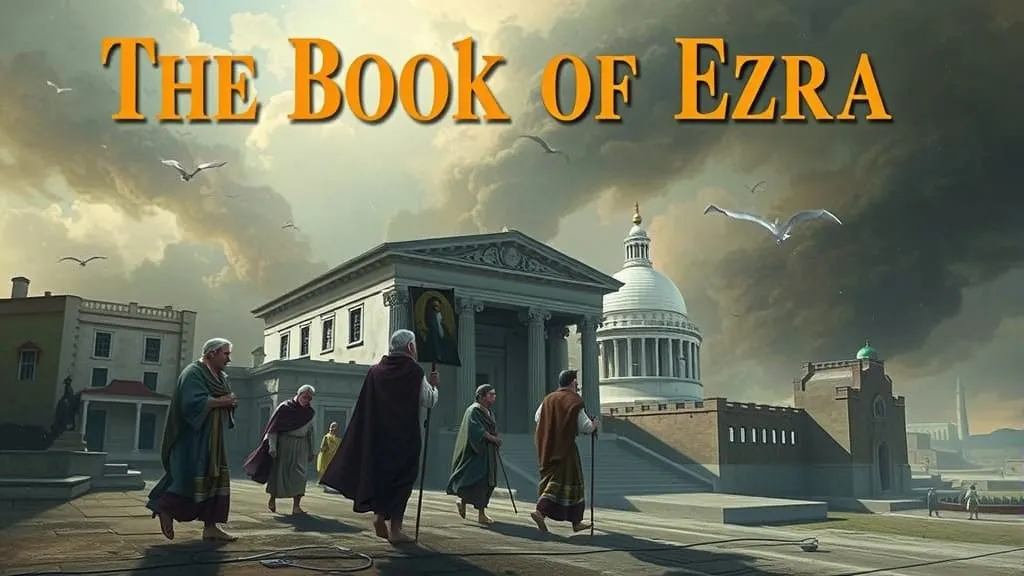Men read the Book of Ezra and see a triumphant story of restoration. They see a faithful remnant returning from exile to rebuild God's Temple and restore the Law. They get a warm feeling from this story of national renewal and religious faithfulness. They are watching a team of inmates meticulously rebuild their own prison, and they are calling it a victory.

The Book of Ezra is not a story of spiritual restoration. It is the tragic and definitive blueprint for how to build a perfect, lifeless, institutional religion. It is the genesis of Pharisaism. It is the ego, having been humbled by exile, doubling down on the very external system that failed in the first place.
1. Rebuilding the Temple: The Relapse into Externalism
The central project of the book is the rebuilding of the Temple in Jerusalem. The religious mind cheers this as a great act of faith. This is spiritual blindness. The Temple of stone was only ever a shadow, a placeholder. Its destruction was a mercy, meant to force the people to find the true Temple within.
But what is the first thing they do upon their return? They reject the inner lesson and immediately begin reconstructing the outer shadow. They choose the familiar comfort of a physical building over the terrifying reality of the indwelling Spirit. They rebuild the prison for God. The project is led by the political establishment (Zerubbabel) and the religious establishment (Jeshua the high priest). It is the ego's grand project of externalizing God, making Him manageable, putting Him back in a box.
2. Ezra the Scribe: The Champion of the Letter
The hero of the story is Ezra, a priest and "a teacher well versed in the Law of Moses" (Ezra 7:6). He is the perfect archetype of the religious ego. He does not come bringing the Spirit; he comes carrying a book. He is the master of the "letter that kills."
His mission is not to awaken the hearts of the people, but to enforce religious compliance. He sets up a system of magistrates and judges to enforce the law of God and the law of the king. This is not spiritual renewal; this is the creation of a theocracy based on external rules and punishments. It is the spirit of religion consolidating its power.
3. The Foreign Wives: A Spiritual Sickness with a Carnal Cure
The climax of the book is the "problem" of intermarriage. The leaders come to Ezra in a great religious panic because the men have married "foreign women." On a symbolic level, the problem is real. The "foreign women" represent the soul's attachments to worldly philosophies, emotional dependencies, and egoic ways of being, the very consciousness of "Babylon" they supposedly left behind.
The sickness is spiritual, but the cure they enact is purely of the flesh. It is an abomination of the religious ego.
What is the solution of the Spirit? To do the hard, internal work of crucifying those attachments within oneself. To "put to death" the inner greed, the lust, the fear.
What is the solution of Ezra and the religious ego? A grotesque external performance. They force the men into a public, legalistic act of mass divorce, casting out not only the "foreign" wives but their own children. They inflict immense human suffering to create an outward appearance of purity. This is not holiness. This is the ego playing God, performing spiritual surgery with a bloody axe. It is the very definition of a "whitewashed tomb," clean on the outside, but inside full of cruelty and the dead bones of true compassion.
Ezra is not a story of a return to God. It is the story of a return to religion. It shows a people who endured the fires of exile and learned nothing. They came back and immediately rebuilt the very system of externalism that led to their ruin. It is the perfect prequel for understanding the dead, legalistic religion that Jesus would later come to confront and dismantle.